Angular SpringBoot CRUD MySQL Example
https://loizenai.com/angular-springboot-crud-mysql-example/
Angular SpringBoot CRUD MySQL Example
In the tutorial, I introduce how to create an “SpringBoot Angular MySQL CRUD Example” with POST/GET/PUT/DELETE requests to SpringBoot RestAPIs.
– Design overview system by Architecture Diagram that includes: Angular Client, SpringBoot RestAPIs, and MySQL database.
– Implement Angular CRUD Client with Angular built-in HttpClient to communicate with server side.
– Implement SpringBoot RestAPIs that gets data from MySQL using Spring Data JPA and returns back data as Json format to requested Angular Client.
Overall Angular SpringBoot MySQL CRUD Architecture Application
- We build backend SpringBoot Application that provides RestAPIs for POST/GET/PUT/DELETE Customer entities and store them in MySQL/PostgreSQL database.
- We implement Angular Application that use Angular HTTPClient to interact (call/receive requests) with SpringBoot backend and display corresponding page view in browser.
Overview SpringBoot CRUD MySQL Backend Architecture
- For building RestAPIs in SpringBoot application, we use Spring MVC Web.
- For interacting with database MySQL/PostgreSQL, we use Spring JPA.
- We implement RestAPI’s URL in RestAPIController.java file to process bussiness logic.
- For manipulating database’s records, we define a JPA model for mapping field data and use a JPA CRUD repository to do CRUD operation with MySQL/PostgreSQL.
– SpringBoot Project Structure
- models package defines Customer model and Message response class.
- repository package defines Spring JPA repository class CustomerRepository to do CRUD operation with database.
- service package defines a middleware class CustomerServices between Controller and Repository.
- controller package defines a RestAPI Controller RestAPIController to handle POST/GET/PUT/DELETE request.
Overview Angular CRUD Architecture Design
Angular CRUD Application is designed with 3 main layers:
- Service Layer is used to define Angular Common Services and HttpClient Services to interact with RestAPIs
- Component Layer is used to define Angular Components to show views in Browser for interacting with Users
- Router Layer is used to route URLs mapping with the corresponding Angular Components
Angular CRUD Application defines 3 components, 2 services, 1 routers, and 2 data models:
– Components:
add-customer component is used to add a new customer to system
list-customer component is used to show all customers on view pages, delete a customer and update a customer
message component is used to define a view to show logging message on browser
– Services:
customer.service.ts defines POST/GET/PUT/DELETE HTTP requests to SpringBoot RestAPIs with the built-in Angular HttpClient.
message.service.ts defines an array storage to log all messages when Angular CRUD App running
– Router: app-routing.module.ts defines how to map a corresponding Angular component with an URL.
– Models:
customer.ts defines the main data model of our application.
message.ts defines the response data model between SpringBoot and Angular application.
Goal – Angular SpringBoot CRUD MySQL
– Add new Customer: from Angular to SpringBoot and save to MySQL.
– List All Customers: from Angular calls SpringBoot RestAPI to get customer from MySQL.
– Details a Customer: from Angular calls get http request from SpringBoot RestAPI to get a record in MySQL database
– Update a Customer: from Angular calls a put http request from SpringBoot RestAPI to update a record in MySQL database.
– Delete a Customer: from Angular calls a delete http request from SpringBoot RestAPI to delete a record in MySQL database.
– Check database records: do a get request from Angular to SpringBoot RestAPI.





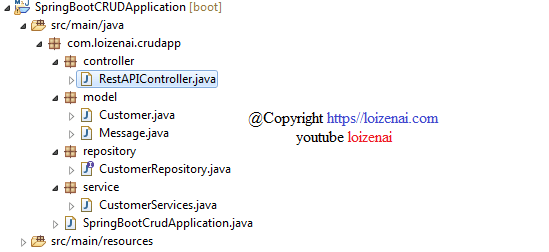

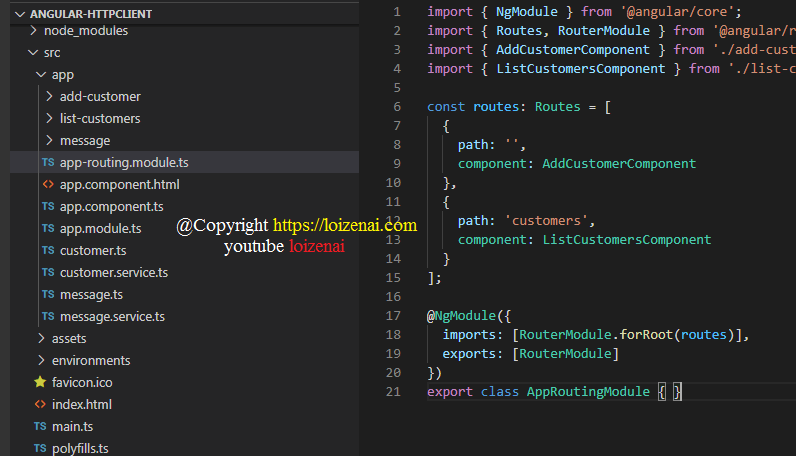
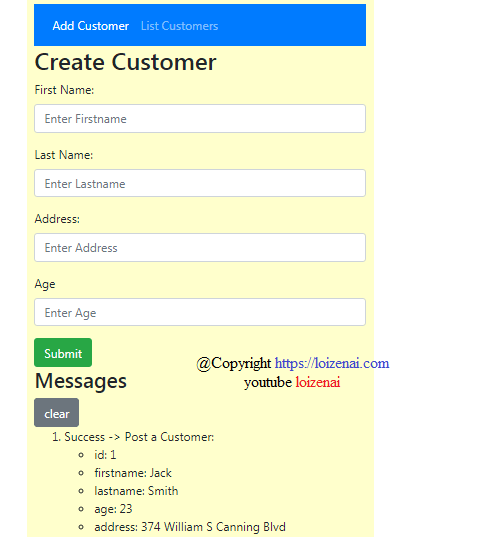
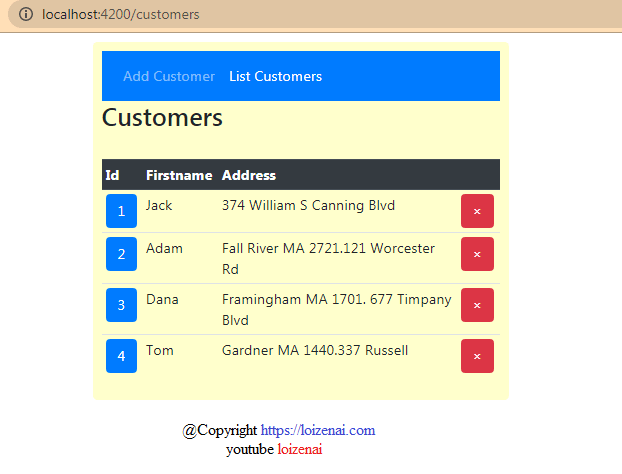
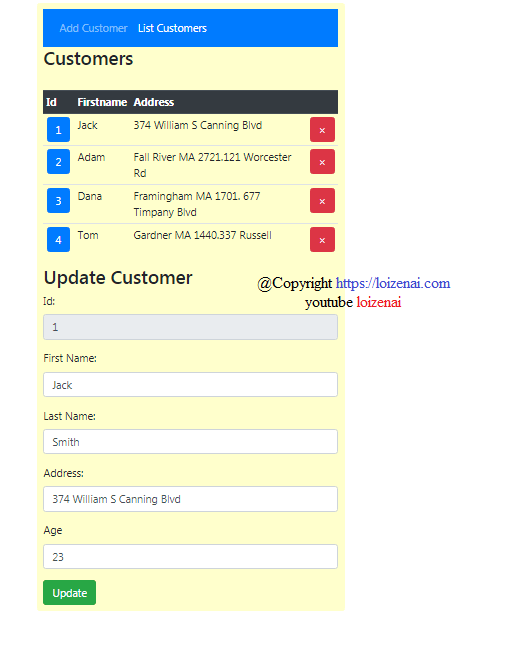




Top comments (1)
I like all the images along the way explaining everything